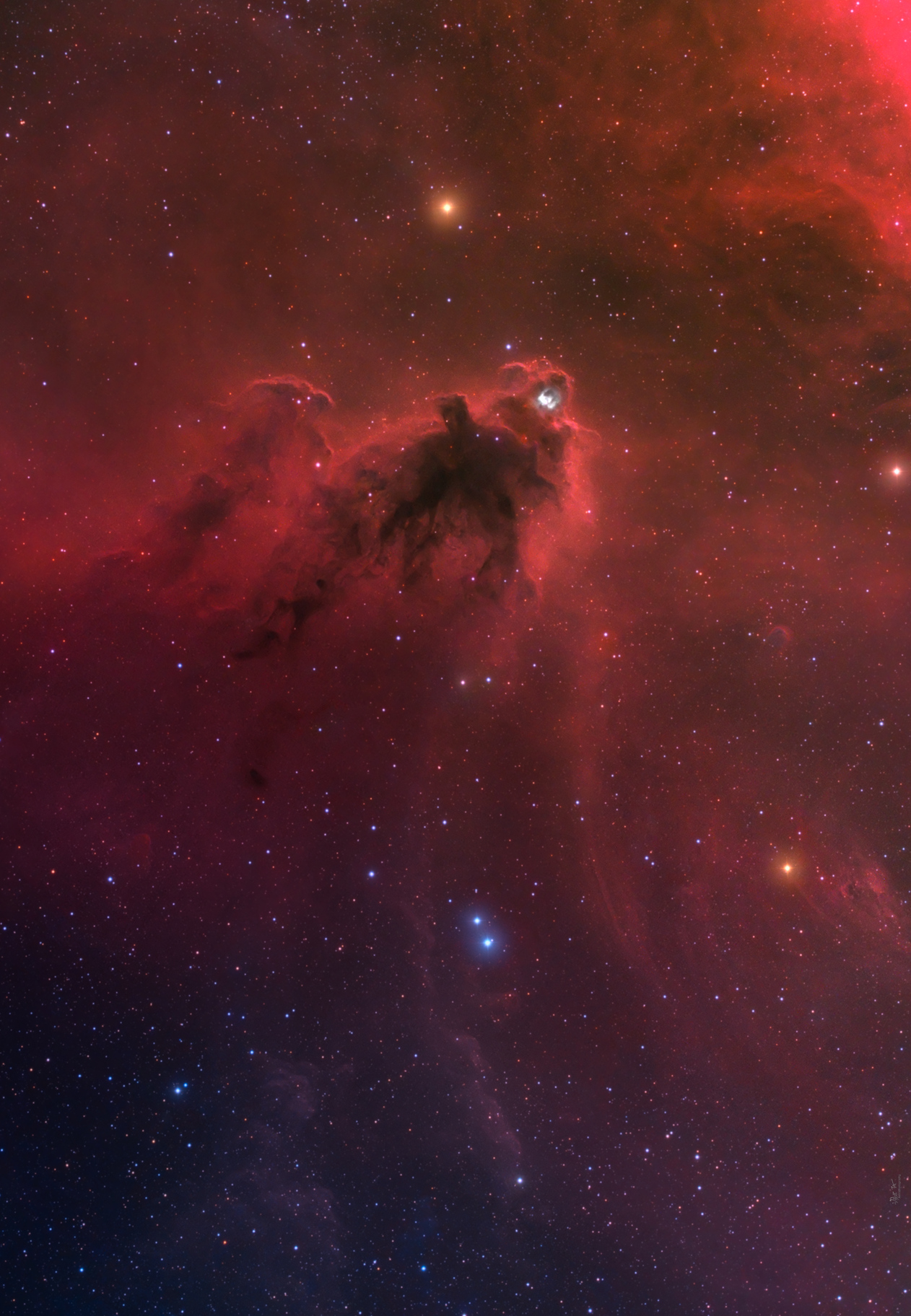NASA has a wonderful web site that will send you a new photograph of something in the cosmos every day. I love it. Sadly, scientists are some of the worst writers in the wider universe. At the Santa Fe Institute and elsewhere, I try to help them when I can. But I believe that people would enjoy and trust science much more if scientists would admit that they need that help and stop trying to write their own explanations. Here’s a recent example from NASA’s APOD project.

Explanation: The silhouette of an intriguingdark nebulainhabits this cosmic scene. Lynds’ Dark Nebula (LDN) 1622 appears against a faint background of glowing hydrogen gas only visible in long telescopic exposures of the region. In contrast, the brighter reflection nebula vdB 62 is more easily seen, just above and right of center. LDN 1622 lies near the plane of our Milky Way Galaxy, close on the sky to Barnard’s Loop, a large cloud surrounding the rich complex of emission nebulae found in the Belt and Sword of Orion. With swept-back outlines, the obscuring dust of LDN 1622 is thought to lie at a similar distance, perhaps 1,500 light-years away. At that distance, this 1 degree wide field of view would span about 30 light-years. Young stars do lie hidden within the dark expanse and have been revealed in Spitzer Space telescope infrared images. Still, the foreboding visual appearance of LDN 1622 inspires its popular name, the Boogeyman Nebula.
Authors & editors: Robert Nemiroff(MTU) &Jerry Bonnell(UMCP)
The word intriguing in the first sentence is ill-advised. It usually suggests spying or wrong-doing. The author means to say the object in the photograph is interesting. The sentence itself says nothing, except to point out that in the photograph we find something that is in the photograph and it’s called a “dark nebula.” This is a dead sentence.
The second sentence goes on to name the thing in the photograph: Lynds’ Dark Nebula 1622, which is no more helpful, because we don’t know what it is or the identity of Lynds, perhaps a person. In fact, Beverly Lynds is the source of the odd word, which happens to be her name. She cataloged nebulae, and her compiled work, published in the early 1960’s, forms a standard reference. Hence the number 1622, which is not a date but a reference to her catalog.
We do learn in that second sentence that the lighter background is hydrogen, presumably at some high temperature, since it is “glowing.” The author has the word only out of place. “only visible in long telescopic exposures of the region” should be “visible only in long telescopic exposures of the region.” But since all images on this web site are from telescopes, we have unneeded words. And since we can’t see what’s in the photograph without the photograph being of “the region” at which we’re looking, we have even more unnecessary words. Cut, cut, cut all your nonsense.
Better: “This dark nebula, known as 1622 from a catalog compiled by Beverly Lynds, appears against a background of glowing hydrogen gas that is visible only in photographic exposures of long duration.”
The next sentence is baffling even to the trained eye: “In contrast, the brighter reflection nebulavdB 62is more easily seen, just above and right of center.”
Better: “Nebula vdB 62 appears as a brighter spot above right of center.” The author has used an unnecessary comma.
The text gets worse from there, including this sentence that makes no sense at all. I won’t attempt to rewrite it, since we don’t know what many important terms mean.
“LDN 1622 lies near the plane of our Milky Way Galaxy, close on the sky to Barnard’s Loop, a large cloud surrounding the rich complex of emission nebulae found in the Belt and Sword of Orion.”
“near the plane of our Milky Way Galaxy”
“close on the sky to…”
“Barnard’s Loop…”
“complex of emissions nebulae…”
Confusion mounts. Exhaustion sets in. Why bother with science when it’s so confusing?
The final sentence:
“Young stars do lie hidden within the dark expanse and have been revealed in Spitzer Space telescope infrared images. Still, the foreboding visual appearance of LDN 1622 inspires its popular name, the Boogeyman Nebula.”
This is troublesome: “and have been revealed in Spitzer Space telescope infrared images.” It should be: “and have been revealed in infrared images from the Spitzer Space telescope.”
There is no need to tell the reader what to feel. And we can eliminate redundancy.
“Still, the foreboding visual appearance of LDN 1622 inspires its popular name, the Boogeyman Nebula.”
Eliminating the crackpot word foreboding does nothing to weaken the message and does something to strengthen the sentence.
Even better: “Still, the appearance of LDN 1622 inspires its popular name, the Boogeyman Nebula.”
